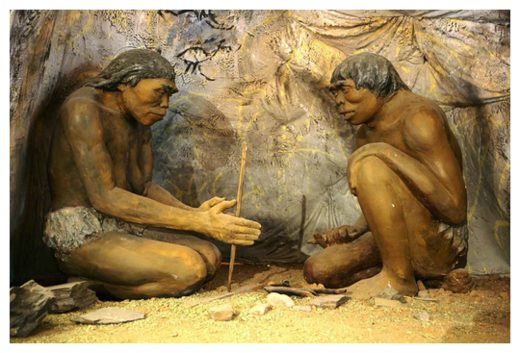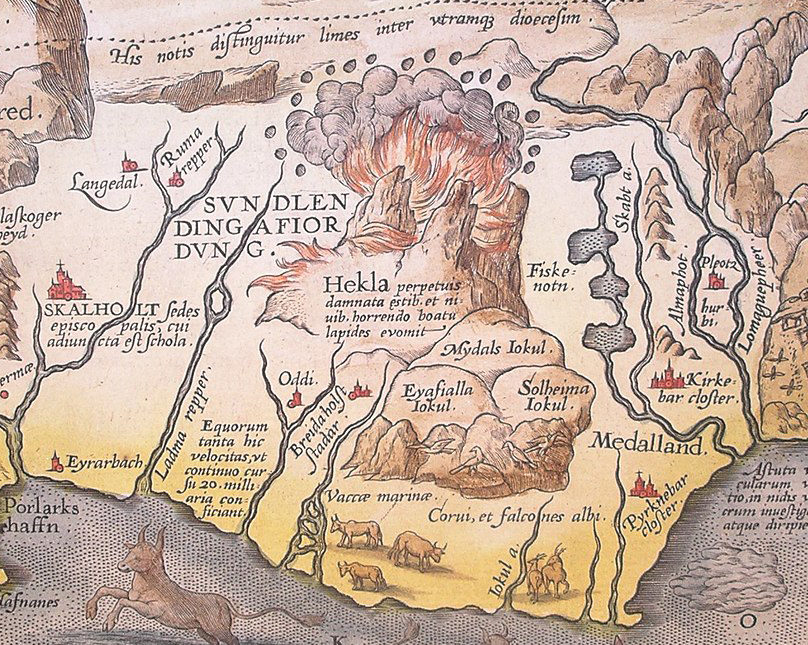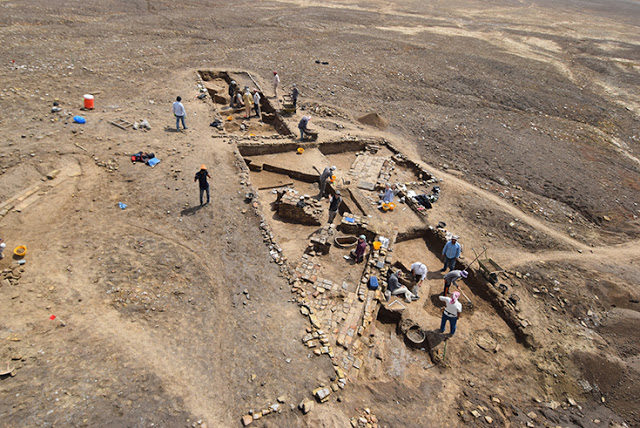
© Nathan McCord/Wikimedia CommonsStone Age hominins probably also used wood and other materials to make tools, as in this diorama from the National Museum of Mongolian History.
When most members of the general public think of the Stone Age, they probably envision an adult male hominin wielding a stone tool. That picture is laughably incomplete.
It assumes that only adult males made and used stone tools, and that stones were the only materials in these ancient people's everyday tool kits. Both assumptions are at best questionable; at worst, they are simply wrong. First, let's tackle the stereotype about raw materials. Recent discoveries in Kenya suggest that the
earliest stone tools may be as much as 3.3 million years old. Other recent discoveries in China suggest that
bone tools — used, for example, to re-sharpen stone axes — may be as much as 115,000 years old. A logical inference from these studies might be that our human ancestors crafted stone tools for nearly 3 million years before making and using tools created from perishable materials such as bone.
But can it possibly be true that our primate ancestors exclusively created stone tools for more than 3 million years,
30 times longer than they made tools out of materials that break down, like bone, wood, and fiber? It's possible, but it defies logic to think that was the case. A better explanation lies in the fact that perishable materials don't preserve well over time, whereas stone tools remain well-preserved for eons.
That difference in preservation rates has long affected our scientific understandings of the prehistoric past — and not for the better.
In the 1830s, Danish archaeologist and curator Christian Jürgensen Thomsen defined the "three age system." In that interpretive framework, Thomsen divided human history (as he understood it) according to the types of tools he found in archaeological sites in northern Europe. Thomsen didn't have any absolute dating techniques available to guide his analysis (like radiocarbon or tree-ring dating); instead, he used the law of superposition — a fancy way of saying that the oldest material found in an archaeological site is, barring any disturbance, buried deepest. Think of the garbage can in your office: At the end of the week, debris from Monday will be at the bottom, debris from Wednesday in the middle, and debris from Friday at the top.





Comment: See also: